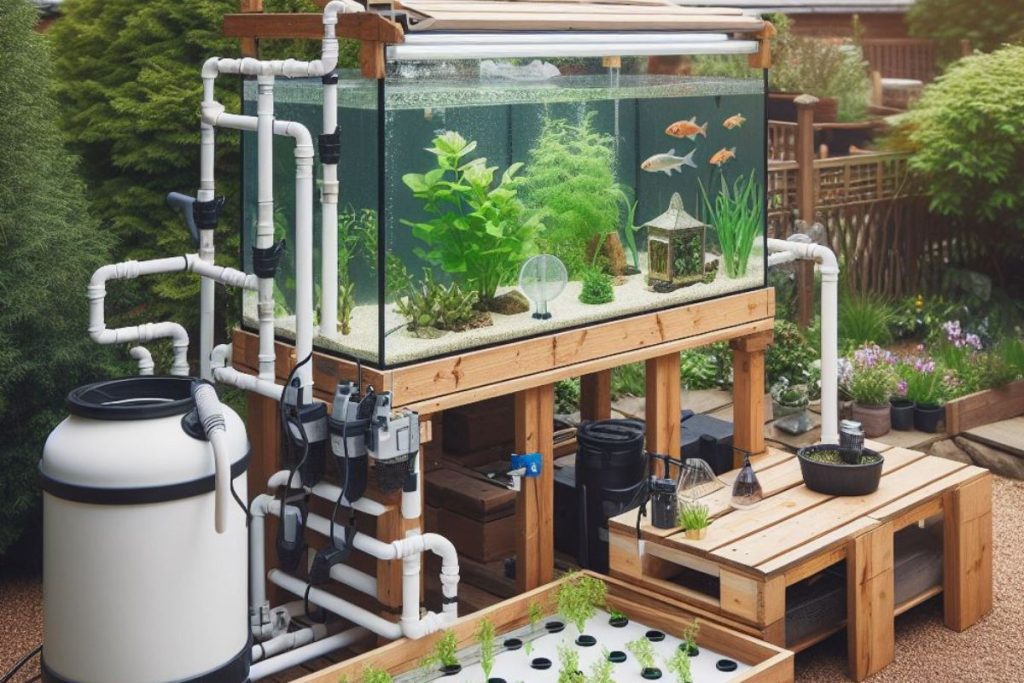Aquaponics Business is a groundbreaking fusion of aquaculture and hydroponics that revolutionizes sustainable farming. In this innovative approach, aquatic life and plant cultivation coexist harmoniously, forming a symbiotic ecosystem that not only produces high-quality fish and crops but also promotes environmental conservation.
If you’re considering venturing into the realm of aquaponics business, you’re in for a rewarding journey that merges technology with nature. At AquaHydro, we are committed to helping you establish and flourish in the aquaponics industry. In this comprehensive guide, we’ll provide you with insights, strategies, and expert advice to outperform competitors and make your aquaponics venture a resounding success.
Understanding the Aquaponics Business Landscape

The Aquaponics Advantage
Aquaponics offers numerous advantages over conventional farming methods. By harnessing the power of symbiosis between fish and plants, aquaponics systems create a closed-loop ecosystem that yields benefits such as:
Sustainable Resource Management: Unlike traditional farming, which often depletes soil and water resources, aquaponics uses water efficiently, with minimal waste.
Year-Round Production: Aquaponics allows for year-round cultivation of crops, irrespective of weather conditions, making it a lucrative business opportunity.
Higher Crop Yields: The nutrient-rich water in aquaponics systems fosters faster plant growth and higher yields compared to soil-based farming.
Reduced Chemical Usage: With careful management, aquaponics systems require fewer chemicals and pesticides, resulting in healthier produce.
Identifying Market Opportunities
Before diving into the aquaponics business, it’s essential to conduct thorough market research. Identify your target audience, assess their needs, and explore potential niches. Investigate the demand for specific crops or fish varieties in your region to tailor your aquaponics system accordingly.
Building a Strong Foundation
Location and Infrastructure
Choosing the right location is pivotal to your aquaponics business’s success. Factors like access to water sources, proximity to markets, and climate considerations should guide your decision. Additionally, invest in high-quality infrastructure, including greenhouse structures and aquaculture tanks, to create an ideal environment for your system.
Legal and Regulatory Compliance
Compliance with local and federal regulations is non-negotiable. Ensure you have all the necessary permits and licenses to operate an aquaponics business. Compliance not only avoids legal issues but also instills trust in your customers.
Setting Up Your Aquaponics System

Planning the System:
- Consider factors such as available space, sunlight exposure, and accessibility when designing the layout of your aquaponics system.
- Choose suitable components like fish tanks, grow beds, pumps, and plumbing to construct an efficient and functional system.
- Ensure proper aeration and filtration to maintain optimal water conditions.
Establishing Water Cycling:
- Implement a cycling process to develop beneficial bacteria that convert fish waste into nutrients for plants.
- Regularly monitor levels of ammonia, nitrite, and nitrate to ensure a stable and healthy aquatic environment for both fish and plants.
Fish Selection and Care:
Species Selection:
- Choose fish species such as tilapia, trout, or catfish that are well-suited for aquaponics, considering factors like temperature tolerance and growth rate.
- Adhere to local regulations regarding the cultivation of specific fish species.
Water Quality Management:
- Conduct regular testing and adjustments of water pH, hardness, and alkalinity to create an optimal environment for fish.
- Monitor oxygen levels and ensure proper aeration to prevent stress or suffocation of fish.
Feeding Practices:
- Provide appropriate nutrition through high-quality fish feed, adjusting feeding rates based on the size and age of the fish.
- Avoid overfeeding to prevent water contamination.
Plant Cultivation:
Plant Selection:
- Choose plants well-suited for aquaponic systems, including leafy greens, herbs, and certain fruiting plants.
- Consider the nutritional requirements of each plant species and ensure compatibility with the waste produced by the fish.
Efficient Planting Techniques:
- Explore various planting methods, such as raft systems or nutrient film technique (NFT), to find the most efficient approach for your space and plant selection.
- Provide proper support for fruiting plants to accommodate the weight of growing produce.
Nutrient Monitoring:
- Regularly monitor nutrient levels in the water to ensure plants receive essential elements for robust growth.
- Adjust nutrient levels as needed and consider supplemental nutrients if deficiencies are detected.
Maintaining Your Aquaponics Business
Monitoring Water Quality
Regularly testing and maintaining water quality is fundamental in aquaponics. Proper pH levels, ammonia, and nitrate monitoring are vital for the well-being of both fish and plants.
Pest Control in Aquaponics
While aquaponics minimizes the risk of traditional farming pests, some challenges may arise. Implementing natural pest control methods ensures a healthy and thriving ecosystem.
Harvesting and Marketing Strategies
Efficient harvesting and strategic marketing are key aspects of a successful aquaponics business. Establishing connections with local markets and restaurants can enhance your market reach.
Challenges and Solutions in Aquaponics
Balancing Nutrient Levels
Maintaining the right nutrient balance is an ongoing challenge. Regular adjustments and a keen understanding of your system’s dynamics are crucial for long-term success.
Fish Health Management
Ensuring the well-being of your fish is paramount. Proactive measures, such as regular health checks and disease prevention, contribute to a thriving aquaponics system.
Regulatory Compliance
Navigating agricultural regulations is crucial for aquaponics entrepreneurs. Staying informed and compliant with local and national regulations is essential for a sustainable and legal operation.
Marketing and Branding
Crafting Your Brand Identity
Your aquaponics business needs a compelling brand identity. Develop a unique name, logo, and mission statement that resonates with your target audience’s values and aspirations.
Digital Presence
In the current era of digital advancements, having a strong online presence is essential. Create a professional website that showcases your aquaponics products and services. Utilize social media platforms to interact with your audience and cultivate a dedicated following.
Sustainability and Environmental Responsibility
Eco-Friendly Practices
Embrace eco-friendly practices to align with the sustainability goals of your aquaponics business. Implement recycling, energy-efficient technologies, and water conservation measures to reduce your environmental footprint.
Ensuring Quality and Customer Satisfaction
Quality Control
Maintaining the highest quality standards is essential. Regularly monitor water parameters, conduct system maintenance, and implement pest control measures to ensure both your fish and plants are healthy.
Exceptional Customer Service
Prioritize exceptional customer service. Timely attend to customer inquiries and issues, aiming to surpass their expectations. Happy customers are inclined to become loyal repeat buyers and advocates for your business.
Conclusion
Embarking on an aquaponics business journey is a forward-thinking venture that aligns with sustainability and innovation. At AquaHydro, we believe in the limitless potential of aquaponics. By understanding the landscape, building a strong foundation, and focusing on sustainability and customer satisfaction, you can position your aquaponics business for unparalleled success. Remember, in this dynamic industry, continuous learning and adaptation are key to staying ahead of the competition.

